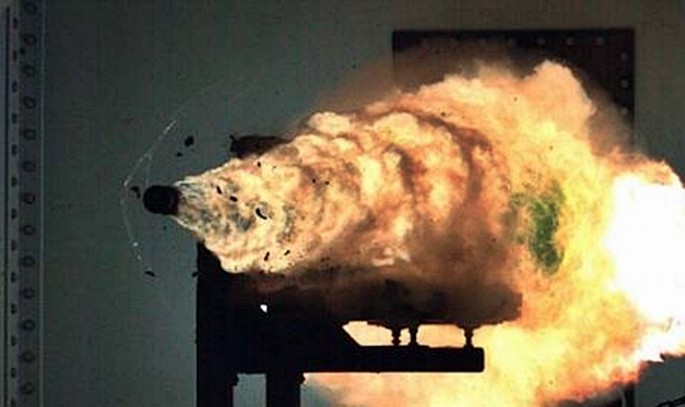The U.S. Navy reported continuing progress in developing exotic weapons based on new and emerging technologies such as directed energy weapons (lasers) and hypervelocity projectiles.
The Naval Surface Warfare Center Dahlgren Division (NSWCDD) said these weapons and other weapons and systems are continuously under research, development, test and evaluation.
NSWCDD recently briefed the Navy's leadership and those from the Department of Defense on the status of the advanced programs being run by the navy.
Among those briefed were Admiral John Richardson, Chief of Naval Operations (CNO); Rear Adm. Ronald Boxall, Director of Surface Warfare and Rear Adm. David Hahn, Chief of Naval Research.
Admiral Richardson saw electric weapons such as an electromagnetic railgun; hypervelocity projectiles, and a high-energy laser in addition to a battle management system. He was briefed on technical advancemes and observed a laser weapon demonstration.
Navy cyber engineers briefed Admiral Richardson on USS Secure -- a multi-enclave test environment to enable the Navy's development, evaluation and testing of cybersecurity concepts and technologies to defend mission critical systems at sea and ashore.
Admiral Boxall and his delegation from the from the Office of the Chief of Naval Operations saw technologies developed at NSWCDD that included a directed energy weapon; an electromagnetic railgun; hypervelocity projectiles; a Tactical Tomahawk missile and the Combined Integrated Air and Missile Defense-Antisubmarine Warfare Trainer, among others.
Admiral Hahn led his Office of Naval Research (ONR) delegation to see ONR sponsored technologies such as a directed energy weapon and an electromagnetic railgun developed at NSWCDD during their visit.
The ONR delegation watched engineers fire a hypervelocity projectile from a 5-inch, 62-caliber open mount gun at the Potomac River Test Range.
The hypervelocity projectile is a next-generation, guided projectile capable of completing multiple missions for gun systems such as the Navy 5-inch, 155 mm and future railguns.
NSWCDD scientists and engineers updated the three admirals on the command's complex warfare systems development and integration capabilities, and their efforts to incorporate electric weapons technology into existing and future platforms.



























